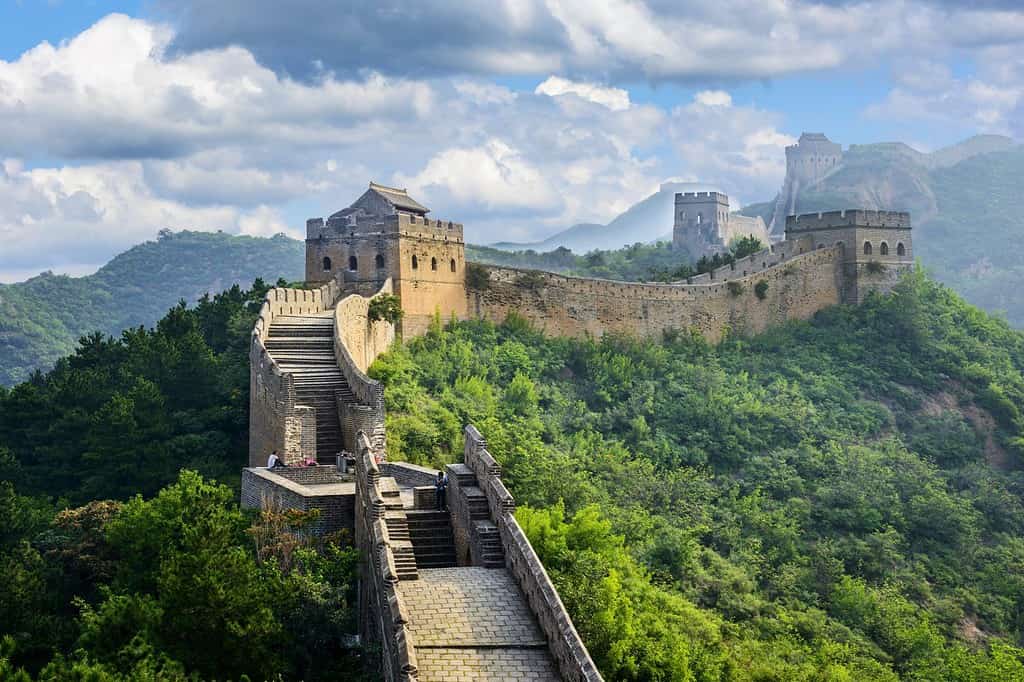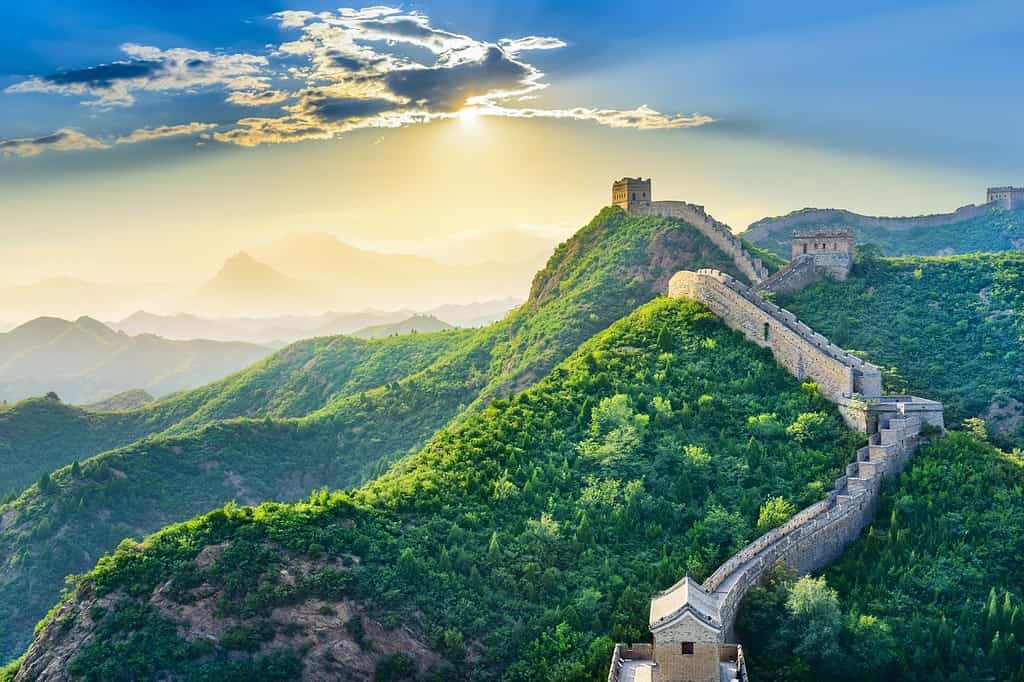The Great Wall of China carries a legacy that goes beyond its original purpose. Over 2,000 years, it has become a symbol of resilience, standing tall as a testament to the incredible engineering skills of ancient civilizations. Today, it captures the world’s attention as the longest man-made structure on Earth. It showcases the brilliance and determination of those who shaped China’s extraordinary history.
The Wall was more than just a barrier against invaders. In fact, it represents the dreams of early leaders to unite China and leave a lasting legacy for their dynasties. It reflects the country’s remarkable ability to rebuild in the face of challenges. With over 10 million visitors every year, the Great Wall continues to captivate people worldwide. It tells a timeless story of human achievement and paints a picture of the vibrant tapestry of Chinese heritage.
Follow along to uncover the rich history and dark mysteries that make this iconic wall more than just a physical marvel. Explore the stories of ancient civilizations, the struggles of dynasties, and the resilience that transformed a wall into a timeless symbol.
Why was the Great Wall built?
As early as 700 BCE, nomadic Mongols invaded the early agricultural settlements of China. During this period, China was made up of many feudal states. Each state faced constant threats from Mongols, as well as internal conflicts with one another. Thus, wall building was common. States all over China built walls to protect their lands. The early walls were often built out of packed earth and wood. As time passed over hundreds of years, independent dynasties continued to build and maintain walls.
In 247 BCE, Qin Shi Huang became the feudal king of Qin. By 221 BCE, he successfully conquered the other warring dynasties, becoming the first ruler to unite all of China. Qin Shi Huang declared himself the first emperor of China, creating the title that would be used for millennia. He worked to unify China as one, with many economic and political reforms to homogenize the diverse cultures of the earlier Chinese states. Qin is also rumored to have burned books and killed scholars to achieve this goal. His great undertaking was to connect all the walls of the previous kingdoms to form one continuous wall, protecting all of China from the Mongols, and starting what became the Great Wall.
The safety of the Wall also fostered trading routes, such as the Silk Road – the first global trade network connecting China to the Middle East and Europe. Trade not only fueled economic prosperity but also allowed for the exchange of information, resulting in huge developments in ancient human technology. The Great Wall played a part in the advancement of humankind as a whole.
How was the Great Wall built?

The Great Wall of China attracts over 10 million visitors annually.
©aphotostory/Shutterstock.com
Millions of people worked to build the wall, and most of it was built by hand. It was very difficult to build such a wall in ancient times. Transportation of building materials was a huge undertaking by itself. The first emperor recruited hundreds of thousands to carry out the task, literally. Stone, rock, wood, and earth were often carried on people’s backs. People, ranging from laborers to soldiers, forcibly recruited peasants, slaves, and prisoners, were involved in moving materials over steep slopes and treacherous caverns. Later, in the Han dynasty, they also used horses, donkeys, and basic machines such as handcarts and wheels. However, people were still the main source of transportation.
Roughly 400,000 people lost their lives in the construction of the wall. Hundreds of thousands of people, brought from all over China, never returned home. When someone died they were laid to rest within the wall itself. Their bodies became part of its construction as subsequent layers were added, entombing them within the structure permanently. The Great Wall is the world’s longest cemetery, not only made up of stone and brick but also the bodies of thousands of men.
The construction itself involved parallel stone walls, with the space between them filled using pebbles and earth. In areas where soil was more abundant, the stone walls were replaced with tampered earth. Bamboo was used to create molds. Then the molds were filled with soil and pounded by hand, layer by layer, until the earth was as hard as stone. Stone and brick were held together by a mortar made of sticky rice. A composite mortar, combining rice with slaked limes, provided enhanced strength and water resistance compared to standard lime mortar.
When was the Great Wall built?

The Great Wall of China is divided into sections, and its longest section is a whopping 5,500 miles long!
©aphotostory/Shutterstock.com
Originally constructed as a series of walls during the Zhou dynasty in 700 BCE to shield feudal states from northern threats, the walls were later connected by the first emperor of unified China during the Qin dynasty in 220 BCE. Construction and upkeep persisted for more than 1,400 years until 1271 CE when Genghis Khan breached the wall. This breach led to the Mongol conquest of China and the establishment of the Yuan dynasty.
Construction of the wall was halted under Kublai Khan’s Yuan dynasty. As Mongols, they were the only regime that didn’t build the Great Wall. It remained untouched until the Yuan dynasty fell to the Ming dynasty in 1368. Pushing the Mongols out, the Ming dynasty fortified and expanded the Wall, determined to never fall to the north again. They expanded the wall for 276 years, from 1368 to 1644. Their efforts built most of the wall that exists today. After the Ming dynasty, all of China never fell to outsiders again.
How big is the Great Wall?
Stretching from the ocean in Shanhaiguan, Hebei province, to Jiayuguan in Gansu province, the Great Wall spans across 15 regions in north China. Stretching an impressive 21,196 kilometers or 13,171 miles in length, that makes it half as long as the Equator. Imagine walking this extraordinary distance nonstop – it would take a whopping 17 months! The wall’s average height is 20 to 23 feet but climbs all the way up to 46 feet tall in some areas. Interestingly, if this colossal feat were attempted today, the estimated construction and labor costs would soar to a staggering 42 billion dollars. That is no small cost!
Did the Great Wall work?
After 1215, the Mongols slowly conquered all the kingdoms of China, and by 1279, Genghis Khan’s grandson, Kublai Khan, defeated the Chinese Southern Song. For the first time, all of China was under foreign rule. Kublai Khan established the Yuan dynasty and held rule over China until 1368.
For most of history, the Great Wall was successful in not only keeping Mongols out but keeping Chinese citizens in. Today the Wall stands as a memorial to the hundreds of thousands of people who gave their lives for its construction, a marker of a united China, and the great legacy of Emperor Qin Shi Huang.
Driven by an obsession with legacy and longevity, Emperor Qin Shi Huang pursued the secret of immortality, aspiring for his dynasty to endure 10,000 generations. However, despite his aspirations, the first emperor of unified China eventually passed away, and his dynasty endured for only two generations. But to Qin Shi Huang, the Great Wall served its greatest purpose: His immortality. His legacy endures over 2,000 years later, and remains the longest man-made structure, even in modern times.
The photo featured at the top of this post is © graphixmania, Streakside/ via Canva.com
Thank you for reading! Have some feedback for us? Contact the AZ Animals editorial team.







